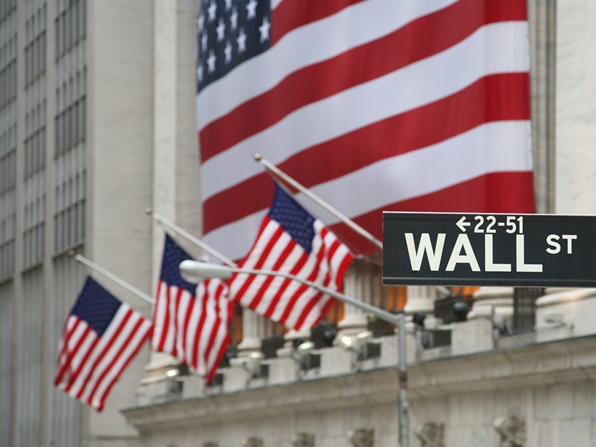The collapse of Deutsche Bank, an institution with a little over $2 trillion in assets is the greatest potential risk to the world’s financial system. The bank’s low level of capital and trouble raising money in the market has fuelled media speculation that is about to collapse.
The biggest threat is Deutsche Bank’s leverage ratio which dictates its ability to cover potential losses. Thomas Hoenig, Vice Chairman of the United States Federal Deposit Insurance Corporation (FDIC), estimated that Deutsche Bank’s leverage ratio was 2.68%. That is about the half the ratio of the biggest American banks such as Wells Fargo and JPMorgan Chase.
Hoenig thinks Deutsche Bank is riskier because it is heavily exposed to derivatives, Bloomberg reported. His critique echoes that of the International Monetary fund which labelled Deutsche as the greatest risk to the global banking system in June. At the same time America’s central bank the Federal Reserve described Deutsche Bank as a significant risk to financial stability.
Deutsche Bank’s woes keep adding up
Deutsche Bank is not meeting the European Central Bank’s (ECB) minimum requirements for financial strength, Credit Suisse Analyst Jon Peace charged on the 16 September. The ECB requires banks to meet a minimum capital ratio of 12.25% – Peace estimated Deutsche Bank’s ratio was below that.
More disturbingly Deutsche Bank’s US unit failed the Federal Reserve’s stress test for financial stability in July 2016 but passed a similar test from the ECB. The German government has added to the uncertainty, the newspaper Die Zeit claimed the country’s Finance Ministry was developing a contingency plan for Deutsche Bank’s collapse. The Ministry stated it had no such plan in a press release.
The market has certainly lost faith in Deutsche Bank its shares were trading at just $13.09 in New York on 30 September 2016. That price is 65% below the level achieved in July 2015, CNBC noted.
An even greater worry is Deutsche Bank’s revenue which fell by $9.39 billion between June 2015 and June 2016. That drop was compounded by the banks losses it reported a negative net income of -$8.746 billion for the second quarter of 2016.
A final problem at Deutsche Bank is a $14 billion fine it faces from the US Justice Department. The fine stems from the institution’s role in the sale of mortgage-based derivatives before the American financial meltdown of 2008.
One obvious problem here is that Deutsche Bank may not have the money to pay the fine. That means it may to negotiate a new settlement with the American government or restructure to pay it.
Deutsche is trying to funds by selling assets including Abbey Life and a $3.9 billion stake in a Chinese lender. Unfortunately it is not clear how much money the bank can raise by selling assets.
Deutsche Bank next Lehman Brothers
The only good news about Deutsche Bank is that most observers do not think its collapse will trigger a financial crisis like that of 2007-2008. Allianz chief economic officer Mohamed El-Erian assured American TV viewers that Deutsche Bank is not a “Lehman moment.”
Deutsche Bank is not insolvent like Lehman Brothers, El-Erian believes. Instead, it is undergoing a crisis of confidence like that which befell Bear Stearns in 2008. Unlike Lehman, which collapsed completely, Bear Stearns was simply absorbed by JPMorgan Chase.
The consensus on Wall Street is that the only way Deutsche Bank would collapse is if the German government or the European Central Bank will refuse to bail out. Instead a more likely scenario is that a smaller Deutsche Bank will survive by selling off many of its assets.
A strong possibility is that the ECB or the German government will simply liquidate Deutsche Bank by organizing its sale to another financial institution. Much like the Federal Reserve did with Bear Stearns.
What Deutsche Bank can tell us about risks from the financial system
The situation at Deutsche Bank demonstrates that the financial system still presents great risks to the rest of the economy.
The greatest of these is that major financial institutions can become insolvent. It was the insolvency of a number of major banks and an insurance company (AIG) that triggered the 2008 meltdown in the United States.
Deutsche Bank certainly has some of the characteristics of the institutions that failed in 2008. That includes a lack of liquidity, lots of toxic assets and a gigantic footprint.
The crisis at Deutsche Bank raises some troubling questions about the financial industry, investment and the overall economy. The most disturbing of these involves the concept of diversification.
The risk from diversification
Modern portfolio theory states that risk can greatly alleviated through diversification. Deutsche Bank tried to implement that doctrine by investing in a variety of businesses including banking, investment banking and insurance. Yet it is still facing a major liquidity crisis and potential collapse.
Perhaps it is time rethink diversification and portfolio theory. If it is flawed the potential risks to the financial system are tremendous. After all diversification is practiced by everybody from individuals investing for retirement to massive institutions like JPMorgan Chase which has $2.466 trillion in assets.
Around 89 million Americans have diversified investment plans such as 401K accounts for retirement. Those plans contain $6.6 trillion in assets according to the US Department of Labour. If diversification is not safe for massive institutions like Deutsche Bank, what chance do small investors have?
Too big to fail
Massive institutions like Chase and its competitor Wells Fargo raise even more doubts. Chase is an investment bank, one of America’s largest consumer banks, a credit card company and a major player in financial technology or fintech.

Wells Fargo, which has assets of $1.889 trillion, is attracting negative attention in the United States because of a recent scandal. The bank’s employees have been accused of opening up to two million fraudulent accounts in order to collect bonus payments.
The risks from a failure at such a large institution are spread far wider than many people think. Legendary American investor Warren Buffett’s Berkshire Hathaway lost $1.4 billion on 13 September when news about the phantom accounts caused a big drop in Wells Fargo’s share prices. Buffett owns around 10% of Wells Fargo’s stock and he has applied to the Federal Reserve for permission to buy more.
Naturally the crises at Deutsche Bank and Wells Fargo will reignite the discussion about “too big to fail” financial institutions and calls for new regulation. Both major US political parties have language calling for the reinstatement of the Glass-Steagall Act in their official campaign platforms.
Glass Steagall barred US financial institutions from engaging in both investment and consumer banking. Some observers believe its repeal in 1999 led to the financial crisis of 2008. Others claim that its repeal reduced risk by giving banks more resources for survival.
Deutsche Bank should teach us all one lesson – large financial institutions still present a major risk. We all need to pay attention to them because a new crisis can start at any time.






